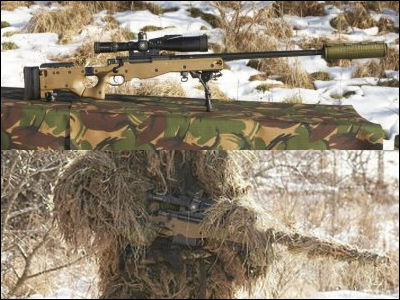The most effective weapon in contemporary battlefield is "concrete"

Among various modern weapons such as tanks and fighter aircraft "The most effective weapon is concrete"Mr. John Spencer, an active military planner, insists.
The Most Effective Weapon on the Modern Battlefield is Concrete - Modern War Institute
http://mwi.usma.edu/effective-weapon-modern-battlefield-concrete/
Many of the experienced military personnel who dispatched to the Iraq warfare seem to have acquired special skills similar to concrete handling experts during dispatching. Concrete has applicability that can not be done with other weapons and techniques, and by using this we can achieve strategic goals such as protecting residents, securing a stable place, eliminating the threat of terrorists It is possible to do. This is proven in Baghdad in Iraq which was a complex city and also a stage of war.
When Mr. Spencer was dispatched to Iraq as an infantry in 2008, he did not expect himself to be an expert for concrete. However, in fact, Mr. Spencer will be able to handle concrete like an expert. Because small concrete barriers are used for traffic control, and large concrete barriers are utilized by terroristsInstant explosive deviceBecause it helps to protect you from IEDs, rocket launchers, mortars, etc., I frequently did work on concrete. From this, concrete has been placed as a barrier, wall, watchtowers in the city of Baghdad.
Concrete lumps were given different names depending on size and shape. For example, small sized concrete (3 ft (about 0.9 m) · 2 ton) is "Jersey", medium sized concrete (6 ft. · 3.5 t) is "Colorado", medium concrete (6 feet 8 inches (about 2 meters) · 6 tons) "Texas", large size concrete (12 feet (about 3.7 meters) · 7 tons) feel like "Alaska". In addition, a concrete wall made of 12 ft · 6 ton concrete wall "T - walls", bunkers and watchtowers etc was also made.
The following pictures are from the left "Jersey", "T-walls", a lookout tower

Mr. Spencer's first concrete used on the battlefield was a "barrier" to deal with the growing IED. From the beginning of 2004, Iraq was forced to respond to the IED that was set on the shoulder. Among them, one of the major tactics to the threat of IED taken by the US military was "to place" T-walls "which is a 12 foot high concrete on all major roads." Soldiers set up concrete barriers on major roads and other small roads over a few days or weeks, and in the long run months. It is said that "T - walls" will cost more than 600 dollars (about 65,000 yen) per dollar. In the eight years in which the Iraq war was held, the US is said to have spent billions of dollars on concrete.

In fact, however, it was impossible to remove all threats of IED by simply setting concrete barriers. Terrorists will now be using IEDs that can be placed on barriers set beside the roads or placed on barriers. Furthermore, it was brought to Iraq by overseas capitalSelf forging bulletAdvanced EED using EFP will also be used. It seems that these bombs had the power to pierce the T - walls installed at the side of the road. With the advent of this bomb, terrorists could bomb the barrier and damage the road side even if you set up a bomb on the side opposite T - walls' road.
However, the US Army decomposes the IED and its debris laid on the concrete barrier, guesses the special material necessary to make a strong bomb that penetrates the barrier and prohibits it at the checkpoint It seems that terrorists could not use IEDs to destroy the concrete barrier beside the road. Concrete barriers not only transported goods safely, but also led to the suppression of anti - governmentalists and others moving freely within Iraq.
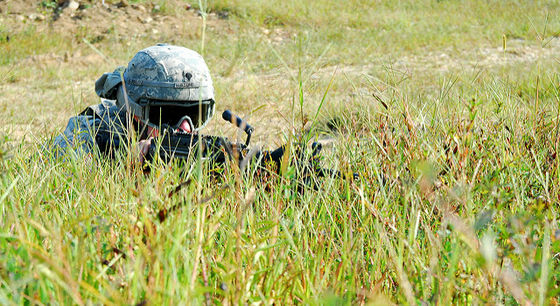
ByUSAG - Humphreys
Of course, IED is not the only threat to the US military in the Iraq war. Immediately after the US military invaded Iraq in 2003, the US military was exposed to mortar and rocket launcher attacks. As a result, it seems that attacking by terrorists became more dangerous when moving to a small base on the front line in the deep part of a city other than a large base. However, concrete was useful for maintaining the safety of soldiers at such frontal bases and not to make civilian casualties.
The lump of concrete can be used not only as a part of the barrier but also as a barrier or as a bunker provided between itself and other structures. By using concrete lumps in this way we can significantly weaken the enemy's attack.
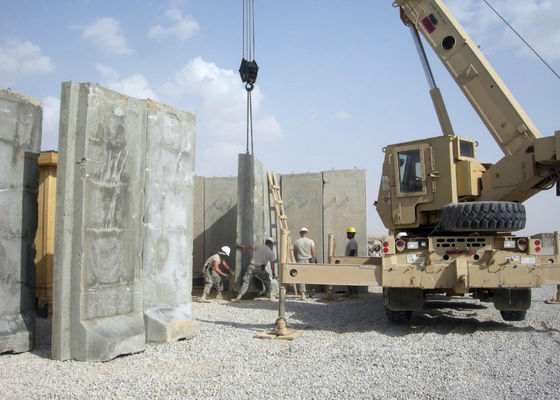
Concrete also played a role in giving soldiers freedom in urban environments. Early in the Iraq War, the US Army chose the best land to base as a base, based on abandoned factories, government buildings, schools, etc. It seems that the place surrounded by several obstacles was chosen as the base because there were few environments that could be used to protect yourself from enemy attacks. As the use of concrete progressed, soldiers became to be able to fill the cracks of the ground with concrete, and within a few weeks a safe watchtower surrounded by large walls could be constructed. In this way, concrete was helpful to soldiers in various scenes.
In addition, concrete is used to protect the local residents by reducing violence. Concrete was used in the US military to reduce the complexity of the environment. As for what this means, we surrounded the residential space of the community with concrete barriers, arranged security forces consisting of local residents' volunteers, and made them guard nearby. This seems to have led to the obstruction of the creation of mass murder weapons by rebel factions and to restrict freedom of movement throughout the country. Also, it seems that dividing troubled areas with barriers has become a daily routine of the US military, and one unit has installed a 12-foot high concrete barrier over 30 miles (about 48 km).
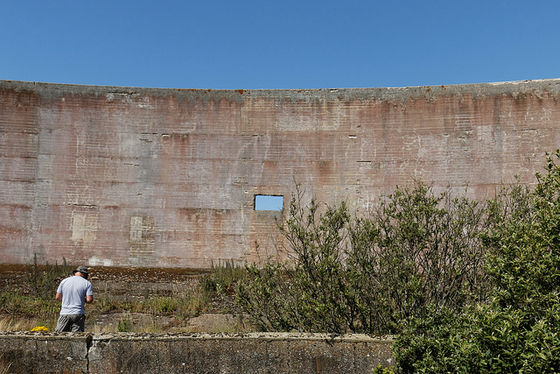
ByPaul Horsefield
Furthermore, Mr. Spencer asserts that concrete can make effective levels of effective tactics at modern warfare. In March of 2008, a fight called Sadar City fight occurred. Among them, the US military uses concrete as a weapon. Like the siege battle, the US military installed a huge concrete barrier around Sadar City using a crane every night. In many days, the US military seems to arrange 122 T - walls around Sadar City overnight, this is how long it lasts for 30 days, T - walls arranged to perfectly surround the city It seems that the number exceeds 3000 pieces. The enemy forces that were in Sadar City attacked the barrier of this concrete but the wall was constructed with a momentum that far exceeded it, and finally the enemy forces in the wall could not replenish. After that, Iraqi security forces and the US military entered the wall and seemed to suppress the interior. In other words, the barrier of concrete not only prevents attacks from enemy forces, it also leads to the success of the control operation as a whole.
American army soldiers carrying concrete barriers overnight
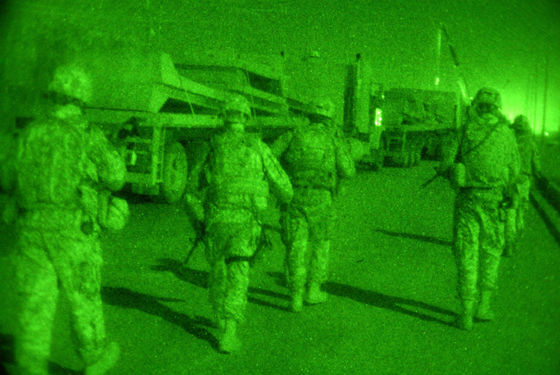
The US military has been fighting in the complex land of Iraq and Baghdad for eight years. Among them, concrete seems to have worked as a weapon to reduce the complexity of the urban area and to strike an attack with stability and security against enemies. Mr. Spencer commented, "Concrete may not be sexy, but it was the most effective weapon in contemporary battlefield."
Related Posts:
in Note, Posted by logu_ii



